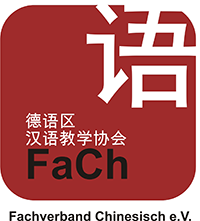Zur Definition der Syllabizitätsvarianten im modernen Chinesisch
Identifier (Artikel)
Abstract
In the beginning the author describes the frame of the syllabicity variants: syllabicity (the phenomenon of number of syllables) contains monosyllabicity/disyllabicity as a subset, which in turn contains syllabicity variants together with its monosyllabic counterparts as a subset.
From indisputable syllabicity variants like yǎnjīng (eye) and zhuōzi (table) in comparison with its monosyllabic counterparts yǎn (eye) and zhuō (table) there is derived a first definition of syllabicity variants having the following features: distinct number of syllables, partial morphemic identity, and synonymy.
This definition is further specified in confrontation with the so-called metonymic substitutes like chē (vehicle) that can be used metonymicly (pars pro toto) for qìchē (car), diànchē (tram), or huǒchē (train) thus constituting similar pairs like yǎn/yǎnjīng (eye) and zhuō/zhuōzi (table): chē/ qìchē (car), chē/diànchē (tram), chē/huǒchē (train). Because of fundamental differences they are not regarded as syllabicity variants. The author takes up some ideas made by N. V. Solnceva two of which are developed further and result in the following conclusions: First, the main criterion for a syllabic variant is that its monosyllabic counterpart must be embodied in the lexico-semantical system of the modern Chinese language. Second, apart from the usual historical sequence monosyllable > disyllable (like yǎn yǎnjīng “eye”) there does also exist the historical sequence disyllable > monosyllable (like jī/ fēijī > jī “aeroplane”).
Therefore one has to specify the third feature of the above given definition of syllabicity variants: Synonymy must be lexical one (it must be given within the lexico-semantical system of the language).
Statistiken

Lizenz

Dieses Werk steht unter der Lizenz Creative Commons Namensnennung - Weitergabe unter gleichen Bedingungen 4.0 International.



